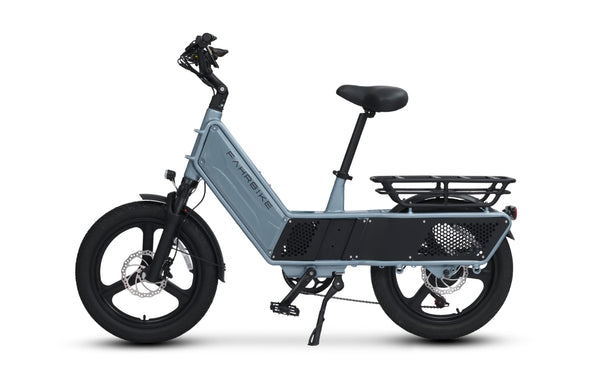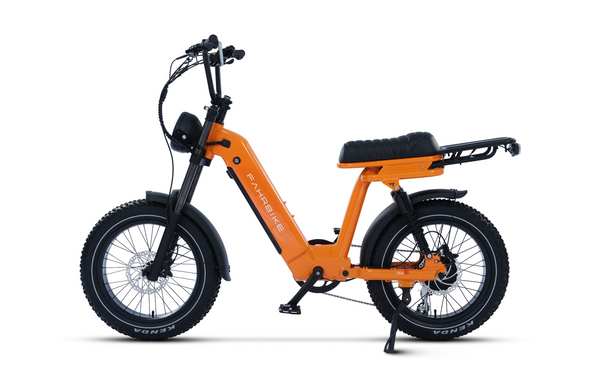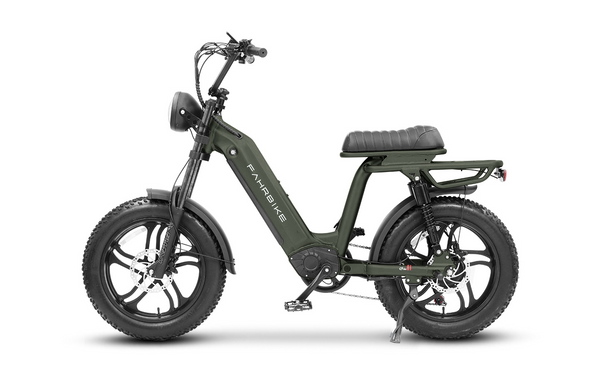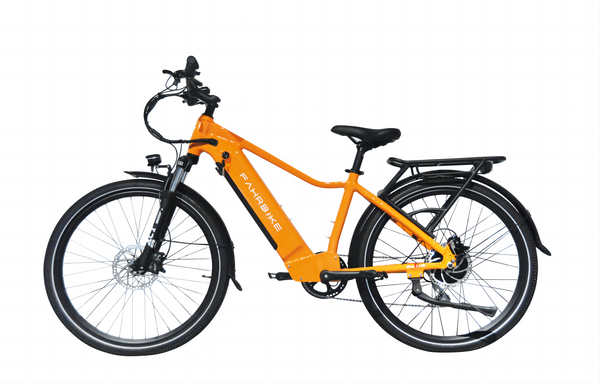The advantages of owning a premium Fahrbike electric bike are numerous. One of these is the option to choose whether to pedal while biking - the function known as pedal assist makes this feasible. Even though they come in a variety of shapes and sizes, they all have one thing in common: they make cycling simpler.
Additionally, the Pedal Assist Sensor in eBikes automatically activates the engine when you pedal. Your ebike's motor can now be controlled without a throttle thanks to this feature. When you start the ebike and peddle, the sensor sends a signal to the pedal assist system (PAS). A torque sensor or a cadence sensor can be used with an electric bicycle. Since these sensors have an impact on how well you ride, it is crucial to comprehend each type of pedal assist sensor.
This article will provide you with clear information on how a torque and cadence sensor functions. Knowing this would make it easier for you to choose the sensor that will provide you the best ride.
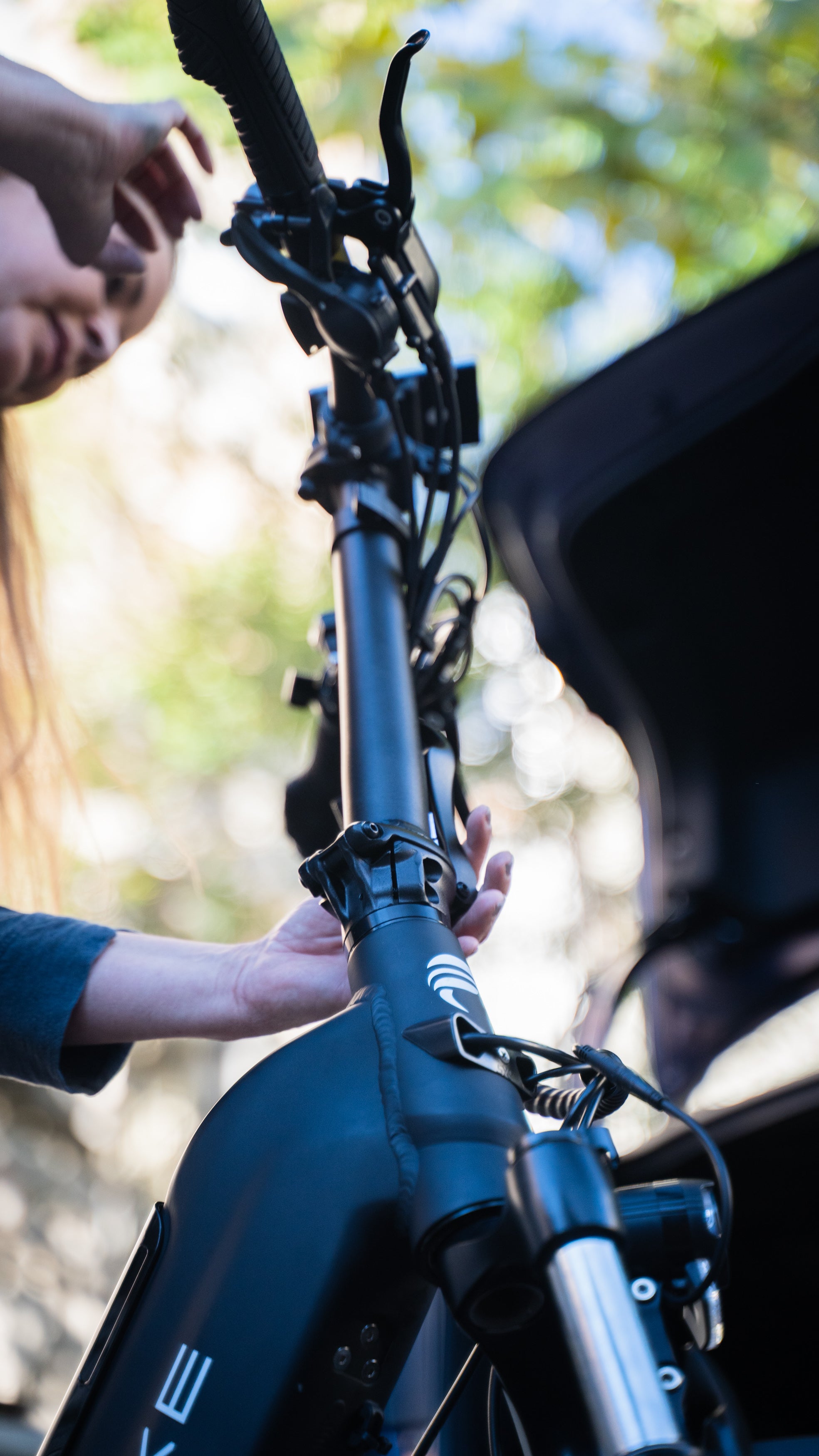
What Is a Torque Sensor?
A torque sensor measures and records your pedal force using an accurate strain gauge. This gauge detects the amount of pedal pressure you apply and alerts the e-control bike's computer system. Based on the force you apply while pedaling, the control unit uses this information to determine the amount of power the motor needs to supply.
It follows that your engine will absorb more energy the more you pedal. Additionally, the power automatically decreases at the same pace the less force you apply to the pedals. When you stop pedaling, the power likewise turns off in a similar manner. The outstanding torque sensor in the Fahrbike Terra all terrian electic bike can also sample your pedaling force up to 1000 times per second, enabling the machine to adjust the pedaling power as it changes fast and promptly.
Additionally, in order to create an identical output, this pedal-assist technology increases your pedal input. Most ebikes include a variety of pedal assist settings. Your pedaling force may increase by 50% on the lowest setting, also known as "eco-mode," and by 300% on the highest setting, also known as "performance mode."
Advantages of Torque Sensors
1. Provides a natural riding style
Since torque sensor ebikes can automatically alter the motor's power based on how hard you pedal, they give you a greater sense of independence. Additionally, this sensor prevents power jolts caused by changes in the pressure of your pedals.
2. Pedal Assistance
Your ebike's torque sensor solves the issue of a lower range that develops when you use the throttle to manage your motor. When used properly, this sensor may quadruple your capacity, giving you a greater range and allowing you to cover more distance on a single battery charge. This is especially possible because the motor augments your pedaling power rather than directly driving the bike.
Power from a Lasting Battery
The battery life of an electric bicycle with a torque sensor is longer. Regardless of how hard you press on the pedal, the battery is always charging while you ride. Furthermore, the battery could recharge even while you brake, allowing you to travel farther.
The torque sensor's drawbacks
1. Difficult to reach top speed
Since the amount of pedaling power applied to the motor determines the speed of a torque sensor, an e-bike. So, the only way to increase your speed is to apply greater pedal pressure. Once you reach this speed, it is challenging to keep it since it requires more consistent pedal power, which can be challenging to maintain.
2. A high cost of acquisition
A torque sensor costs about $150, and an ebike with one costs about $2,000 on average. These expenses are high for a sensor.
3. Riding demands greater effort
As the motor takes significant strength for extended periods of time, you must provide pedaling energy to keep it moving continuously.
What is a cadence sensor?
Cadence sensors on electric bikes often start working when the rider starts moving forward with the paddle. In essence, the cadence sensor detects whether you are cycling or not. When you pedal, the speed sensor on the Fahrbike Cruz community electric bike activates using a switch button, sending a signal to the control unit. The motor is then turned on automatically by the control device, which also turns off when you stop pedaling.
A magnet plus a sensor make up the cadence sensor. The sensor is fastened to the frame of the ebike, typically close to the bottom bracket. When you begin pedaling, a set of magnets coupled to a disc mount on the crank pass through the sensor. When you stop, the magnet follows suit. This aids the cadence sensor in detecting the movement of the magnets and determining if you are riding.
The magnet disc of an ebike with a cadence sensor normally has 3 to 14 magnets. The pedal assist mechanism will be more responsive the higher the number and vice versa. As a result, when there are more magnets, the ebike's control unit receives signals more frequently.
Advantages of Cadence Sensors
1. Affordable acquisition costs
An ebike with a cadence sensor costs about $800, whereas a cadence sensor is about $20. This pricing suggests getting an ebike with a cadence sensor is less expensive and more doable.
2. Riding involves less effort
Since it requires little to no effort to use, the cadence sensor bike is simple to operate. To keep the motor engaged, you must press the pedals. By doing this, the cadence sensor bike becomes a suitable choice for older people or cyclists with weak knees looking for a leisurely ride.
3. E-bike that is simple to use
Given that the majority of ebikes contain a cadence sensor, getting an ebike with a cadence sensor is simple. As a result, manufacturing the cadence sensor bike would be less expensive, leading to enormous production and eventual low sales.
Drawbacks of Cadence Sensor
1. Lower range
Because the engine has to work harder, ebikes with a cadence sensor can only travel a certain distance on a single charge. The ebike also makes use of a powerful battery to power the engine.
2. Less independent
For riders who want to feel more of their bikes and their effort while riding, the cadence sensor electric bike is not the best option. Thus, the pedal assist system may seem irregular and counterintuitive as a result of the cadence sensor.
3. Less easy to regulate
The interval between the motor's on and off phases might change. In this circumstance, the electric bike might need aid for control. Additionally, the e-bike may spike as it starts up.
How long do pedal-assist bikes last?
Your pedal assist can last the same number of years as an e-bike, which has an average lifespan of ten years. Depending on the manufacturer and usage of your bike, the number could be greater or lower.
How quickly is pedal assistance possible?
Class 1 and Class 2 electric bicycles typically stop supporting the rider once they reach 20 mph, whereas class 3 electric bicycles do so at 28 mph.
Conclusion
A important choice an e-bike user must make is the pedal assist sensor to use. It's best to select the pedal assist sensor that best fits your requirements. Because of this, the answer to the question "which sensor is better" relies on a variety of things, including your riding style, your comfort level, the distances you ride, and your budget for the electric bike. Shop at Fahrbike for your chosen electric bike, whatever choice you make today.


